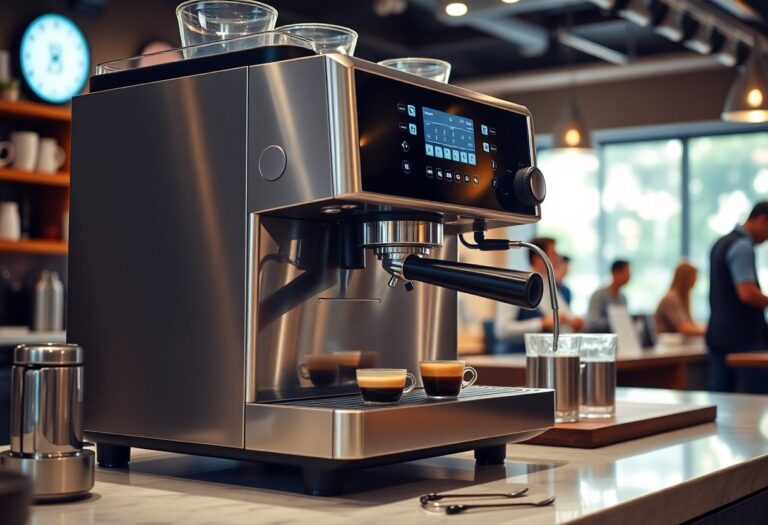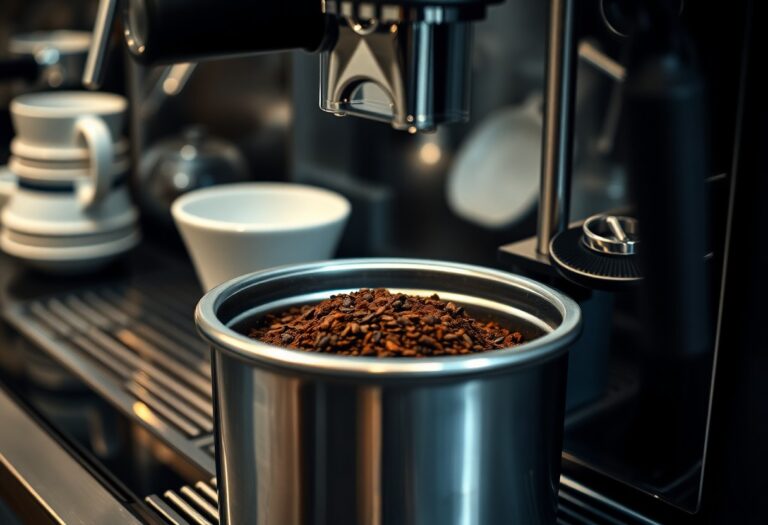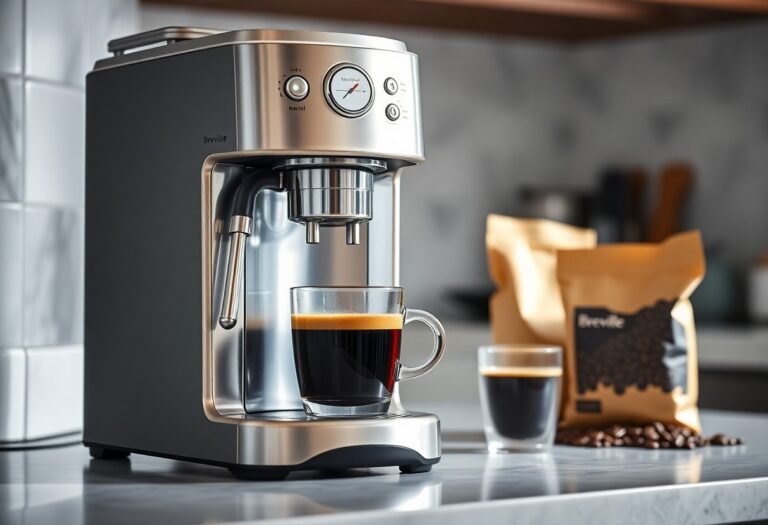Which is the Best Coffee Machine for Home Use – Residential Champion
You deserve a coffee experience that matches your taste and lifestyle, and choosing the right coffee machine is key to achieving that. With a multitude of options available, it’s vital to understand what features cater to your needs for convenience, quality, and performance. In this guide, we will explore the best coffee machines for home use, highlighting their unique benefits and helping you avoid common pitfalls that can lead to buyer’s remorse. Whether you’re a casual drinker or a coffee connoisseur, you’ll find valuable insights to make the best decision for your kitchen.

Key Takeaways:
- Identify your coffee preferences: Consider whether you enjoy espresso, drip coffee, or specialty drinks to choose the right machine type.
- Evaluate ease of use and cleaning: Look for machines that are user-friendly and have features making cleaning simple to maintain daily convenience.
- Check for brewing capacity: Depending on your household size, choose a machine that can brew multiple cups at once to suit your needs.
- Assess build quality and durability: Invest in a coffee machine with a solid build to ensure it lasts through daily use.
- Compare features and price: Review different models and their functionalities to find one that offers the best value for your budget and lifestyle.

Decoding Coffee Quality: The Machine’s Role
The quality of your coffee is significantly influenced by the equipment you choose. From the grind settings to the brewing process, every factor plays a vital role in achieving that perfect cup. Investing in a high-quality coffee machine allows you to control various parameters that directly affect flavor and texture, ultimately enhancing your coffee experience at home.
How Grind Size Influences Flavor
Grind size directly impacts the coffee extraction process. Finer grinds increase the surface area, leading to quicker extraction, while coarser grinds slow it down. The right balance is important; if your grind is too fine, you risk over-extraction, resulting in bitterness, and if too coarse, under-extraction leaves your coffee weak and sour.
Brew Temperature and Its Impact on Extraction
The temperature of the water used to brew coffee is pivotal to achieving optimal extraction. Generally, a brewing temperature ranging from 195°F to 205°F (90°C to 96°C) is recommended. Water that is too hot can scald the grounds, releasing undesirable bitter flavors, while cooler water fails to extract the coffee oils and flavors properly, resulting in a flat taste.
| Brew Temperature | Flavor Profile |
|---|---|
| Too Hot (>205°F) | Over-extraction, bitterness, and harshness |
| Optimal (195°F – 205°F) | Balanced sweetness, acidity, and body |
| Too Cold (<195°F) | Under-extraction, sourness, and flatness |
The significance of maintaining the right brewing temperature cannot be overstated. Temperatures below 195°F often lead to under-extraction, which makes your coffee taste bland and unimpressive, while excessive heat can create an unpleasant bitterness. Different coffee types might require slight adjustments in brewing temperature, but staying within the 195°F to 205°F range generally yields the best results across the board. This careful control lets you unlock the full spectrum of flavors, satisfying your coffee palate with each brew.
| Temperature Variable | Effect on Coffee |
|---|---|
| Higher Brewing Temp (>205°F) | Increased bitterness, reduced complexity |
| Lower Brewing Temp (<195°F) | Less flavor extraction, watery feel |
The Battle of Functions: Single-Serve vs. Full-Size Machines
Choosing between single-serve and full-size machines often boils down to your lifestyle and coffee preferences. Single-serve devices, like pod machines, offer ultimate convenience and minimal cleanup, ideal for those with limited time. Conversely, full-size machines entice with their ability to craft multiple cups and various brew styles, appealing to those who appreciate the coffee-making process. Explore the Best Espresso Machines for Beginners & Coffee Nerds to discover the right fit for your home.
Pros and Cons of Single-Serve Devices
Single-serve machines offer a range of advantages and drawbacks. Here’s a quick breakdown:
| Pros | Cons |
|---|---|
| Convenient and quick brewing | Expensive pods |
| Minimal cleanup required | Less customizable |
| Great for single users | Wasteful packaging |
| Compact and easy to store | Limited brew sizes |
| Consistent results | Lower quality coffee compared to traditional methods |
Benefits of Traditional Drip and Espresso Machines
Opting for traditional drip or espresso machines offers distinct advantages that cater to a true coffee enthusiast. These machines provide a richer, more flavorful cup thanks to their brewing processes, allowing you to experiment with different grind sizes and coffee types. With more flexibility in terms of volume, you can brew multiple cups at once or treat guests to expertly crafted espresso shots. Moreover, the ability to control variables such as temperature and extraction time grants you the power to perfect your brew according to exact preferences, elevating your coffee experience significantly.
Budgeting Your Brew: Cost vs. Value in Coffee Machines
Determining the right budget for your coffee machine requires a balance between cost and value. Investing in a higher-end model may seem daunting, but it often leads to superior coffee quality and longevity. Analyze how much coffee you consume and the types of brews you enjoy to find a machine that meets your needs without compromising your financial comfort. Keep in mind that spending a little more can yield better features and performance, making your daily brew worth every penny.
Analyzing Features Worth Spending On
When budgeting for a coffee machine, certain features justify a higher price point. For instance, a machine with adjustable brew strength, built-in grinders, or customizable temperature settings can elevate your coffee experience significantly. These features not only enhance convenience but also allow you to tailor your brew to maximize flavor and aroma, making them worthwhile investments for any serious coffee enthusiast.
Price Trends and What They Mean for Consumers
In recent years, coffee machine prices have fluctuated, reflecting a growing demand for quality home brewing equipment. The trend shows an increase in mid-range machines offering advanced features previously reserved for high-end models. This provides more options for consumers looking for value without overspending, allowing you to access premium capabilities at a more manageable price point.
As manufacturers innovate and competition increases, the market continues to shift, benefiting consumers who are increasingly able to find machines that fit their budget while still providing excellent functionality. For example, many mid-range models now include features like programmable settings and mobile app connectivity, bridging the gap between basic and high-end options. Staying informed about these trends enables you to choose wisely, ensuring you make a smart purchase that aligns with both your coffee needs and your financial goals.
User Experience: Easy Integration into Daily Life
A coffee machine should seamlessly fit into your routine, enhancing your mornings rather than complicating them. Opt for models featuring programmable settings that let you wake up to the aroma of freshly brewed coffee or machines with one-touch controls designed for those hectic mornings. The ability to customize brew strength and temperature can also elevate your coffee experience. Consider compact designs, like the popular Nespresso VertuoPlus or Café Specialty Brew, which fit neatly on countertops and are easy to handle, ensuring that your coffee routine is integrated smoothly into your daily life.
The Importance of Usability and Maintenance
Your coffee machine should be user-friendly, allowing for easy operation and maintenance. Machines that feature intuitive interfaces and clear instructions can simplify the brewing process, reducing the chances of mistakes that could affect your coffee quality. Regular maintenance, such as descaling and cleaning, lessens downtime and keeps your machine running efficiently, ensuring you enjoy the best flavor and longevity from your purchase. Look for models that offer features like automatic cleaning cycles to alleviate maintenance burdens.
Smart Technologies and Their Convenience Benefits
Smart coffee machines integrate with your smart home systems, allowing you to control them via your smartphone or voice assistants like Alexa and Google Assistant. This capability enables you to start brewing before you even step into the kitchen, or adjust settings remotely to ensure that your coffee is always prepared just the way you like it. Many models also feature app connectivity that offers customizable recipes and brewing schedules tailored to your preferences.
With smart technologies, brewing coffee can become an automatic part of your morning routine. For example, the Hamilton Beach FlexBrew allows you to create customized coffee experiences via an app, enabling you to experiment with different settings while you’re on the go. Moreover, features like notifications remind you of maintenance needs, ensuring your machine remains in top-notch condition with minimal effort. This level of convenience not only saves time but also enhances the overall experience, giving you more freedom to enjoy your daily cup.
Expert Opinions: What Baristas Look for in Home Machines
Baristas prioritize quality and consistency, seeking machines that offer precise temperature control and pressure regulation for optimal extraction. They value machines with durable construction and easy maintenance, as a robust build ensures longevity and regular usage is inevitable during daily routines. Programmability is also a key feature; being able to customize brew settings allows you to replicate café-quality drinks at home. Ultimately, they advocate for machines that strike a balance between affordability and high-end features, ensuring an exceptional coffee experience without breaking the bank.
Recommended Brands and Models by Professionals
Industry experts often recommend brands like Breville, known for its user-friendly features and consistent performance, and Rancilio, which provides commercial-grade quality for home users. Models like the Breville Barista Express and Rancilio Silvia consistently make the cut for their ability to produce café-quality espresso. Alongside these, Technivorm is touted for its drip coffee makers, praised for their precise temperature control and ease of use.
Common Missteps When Choosing a Home Coffee Maker
Many coffee enthusiasts falter in their selection process by prioritizing aesthetics over functionality, overlooking imperative features that enhance brewing quality. Additionally, a lack of understanding of maintenance requirements can lead to poor long-term performance. It’s also common to underestimate the desired brew size, resulting in machines that don’t accommodate your needs—whether that’s a single cup or multiple servings.
Browbeating yourself over budget constraints can also steer you towards subpar options. Investing in a lower-quality machine may seem savvier initially, yet it frequently ends up being more costly in the long run due to repairs or replacements. Moreover, failing to consider the type of coffee you prefer may lead to regret when your machine can’t deliver your desired brew profile. Always evaluate your specific coffee habits and lifestyle before making a decision to ensure you choose a machine that aligns with your aspirations.
Final Words
As a reminder, selecting the best coffee machine for your home involves considering factors such as brewing style, ease of use, and maintenance. By evaluating your personal preferences and needs, you can find a machine that suits your lifestyle and enhances your coffee experience. Whether you prefer a simple drip coffee maker or a sophisticated espresso machine, you have the power to make your mornings more enjoyable with the right choice. Prioritize your enjoyment and explore the options available to find your ideal coffee companion.
FAQ
Q: What features should I look for in the best coffee machine for home use?
A: When dicking out a coffee machine for home use, consider features such as brewing methods (drip, espresso, single-serve), capacity (number of cups), ease of use, maintenance requirements, and additional functionalities like programmable settings, built-in grinders, and milk frothers. Your personal coffee preferences will also guide your decision, such as whether you enjoy a single cup or brewing larger quantities.
Q: Does the price of a coffee machine reflect its quality?
A: While price can often indicate quality, it is not the only factor. Some high-end machines offer advanced features, but there are also budget-friendly options that brew excellent coffee. It’s important to read reviews and consider user experience, brewing performance, and long-term reliability before making a purchase. Sometimes, a mid-range machine can provide great value without breaking the bank.
Q: How do I maintain my coffee machine to ensure optimal performance?
A: Regular maintenance is imperative for the longevity of your coffee machine and the quality of the coffee it brews. It typically involves cleaning the machine after each use, descaling it periodically to remove mineral buildup, and replacing any filters as required. Refer to the manufacturer’s manual for specific care instructions, as different machines have unique maintenance needs.
Q: Can I use any type of coffee grounds with my home coffee machine?
A: The type of coffee grounds you can use may depend on the specific type of coffee machine you own. Drip coffee makers generally use medium grind coffee, while espresso machines require fine grind. For single-serve machines, you typically use pre-packaged pods or specific ground coffee designed for that model. Always check the machine’s guidelines for optimal results.
Q: What is the impact of brew time and water temperature on my coffee?
A: Brew time and water temperature significantly affect the extraction process, which influences the flavor profile of your coffee. Generally, a brew time of around 4-5 minutes is ideal for drip coffee makers, while espresso machines require much shorter brew times at higher temperatures (around 190-205°F) for optimal extraction. Experimenting with these variables can help you achieve your desired coffee strength and flavor.







